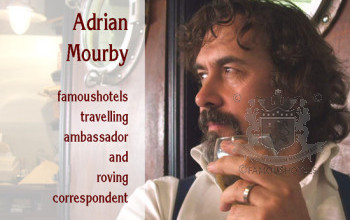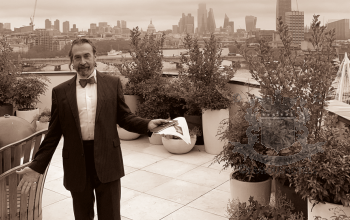A Tale of Two Astorias.
( words)
By Adrian Mourby
The name “Waldorf” is forever linked to ”Astor” in the public imagination. It was John Jacob Astor I, the wealthiest man in the United States at the time of his death in 1848 who was ultimately responsible.
Astor was born in the German city of Walldorf but emigrated to the United States to become its first millionaire. Among his many descendants were two cousins John Jacob Astor IV, who went down on the Titanic in 1912, and William Waldorf Astor who, controversially, was made a Viscount by the British and died in 1919. The two men often tried to out-do each other and William Waldorf Astor’s purchase of a peerage might be seen as his final triumph.
 It was William’s side of the family that introduced the Anglicised form “Waldorf” into their family name which is why when William opened a hotel on London’s Aldwych in 1908 it was known as The Waldorf. On August 18th the Waldorf (now the London Hilton Waldorf) commemorated its founder with the unveiling of a new cocktail by head barman, Nelson Bernades named The Astor Hip Flask. It’s a whisky-based cocktail presented in a reproduction Edwardian hip flask for the guest to pour out and sip at leisure.
It was William’s side of the family that introduced the Anglicised form “Waldorf” into their family name which is why when William opened a hotel on London’s Aldwych in 1908 it was known as The Waldorf. On August 18th the Waldorf (now the London Hilton Waldorf) commemorated its founder with the unveiling of a new cocktail by head barman, Nelson Bernades named The Astor Hip Flask. It’s a whisky-based cocktail presented in a reproduction Edwardian hip flask for the guest to pour out and sip at leisure.
The Astor Hip Flask will be served in the Waldorf’s new cocktail bar, Good Godfrey’s which looks out on to Aldwych and opened earlier this year. Good Godfrey’s commemorates another famous name associated with the Waldorf, Howard Godfrey who in the 1930s was leader of The Waldorfians, the hotel’s orchestra. Godfrey and the Waldorfians popularised the tango in inter-war London and even made “live at the Waldorf” 78 rpm records.
Across the Atlantic the other famous Waldorf also has a bar whose name is also linked to a piece of Astor family history. New York’s first Astor hotel was built on 5th Avenue in 1893 by the same William Waldorf Astor before his move to England. This Waldorf was thirteen storeys high and was constructed on the plot of land where William’s father had built his house. However this also meant that it was built right next to the house of Caroline Webster Schermerhorn Astor, William’s aunt. Given that hotels were not as socially respectable in the nineteenth century as they were about to become at the beginning of the twentieth, it was not a pleasant thing that William Waldorf Astor did, but then he had his aunt had not been on good terms for a long time.
At this point in the story, cousin John Jacob Astor IV, an altogether more charming man, came on the scene. John Jacob persuaded his aunt to move nearer to Central Park. He then bought her house to build his own hotel, the Astoria, which was four storeys higher than the Waldorf and opened in 1897. Between the two buildings ran a small passageway known as Peacock Alley. The plan devised by John Jacob and George Boldt, the hotel proprietor to whom Astor leased the hotel, was that the Waldorf and Astoria would be linked in due course, but this passageway kept them as separate entities should the two sides of the family decide to separate their investments. Eventually the two hotels became known as the "Waldorf-Astoria" or even simply in New York as “The Hyphen”.
The Waldorf-Astoria helped change the image of city hotels away from simple places of convenience for travellers to social centres. In the early 1900s New York’s elite “400” partied at the Waldorf-Astoria as if it were Versailles or the Court of St James.
With the death of Boldt in 1918, the Waldorf-Astoria was sold by the Astor family. It was bought by General Coleman DuPont, who hired hotelier Lucius Boomer to manage the business. When Prohibition and the Depression did for the famous “Hyphen” in 1929, it was demolished to make way for the construction of the Empire State Building. As a parting gift the board of directors allowed Boomer to purchase the name Waldorf-Astoria for one dollar.
Within days of his retirement to Florida, Boomer was invited back to run a new Waldorf-Astoria to be built by New Yorker Louis Horowitz on its current site, nearer Central Park, at 301 Park Avenue. Today this world-famous Art Deco hotel commemorates its inception as two hotels in the ground floor bar, which since 1960s has been known as Peacock Alley.
Recently the Hilton group subtly renamed the Waldorf-Astoria by doubling the hyphen in what looks like a gesture of equality to end the competition between the two cousins. William Waldorf Astor and his cousin John Jacob Astor IV are commemorated in the new compound Waldorf=Astoria New York. Moreover “Waldorf Astoria Hotels” has been adopted as the brand name given to the Hilton’s luxury and landmark hotels. What’s in a name? A lot.












